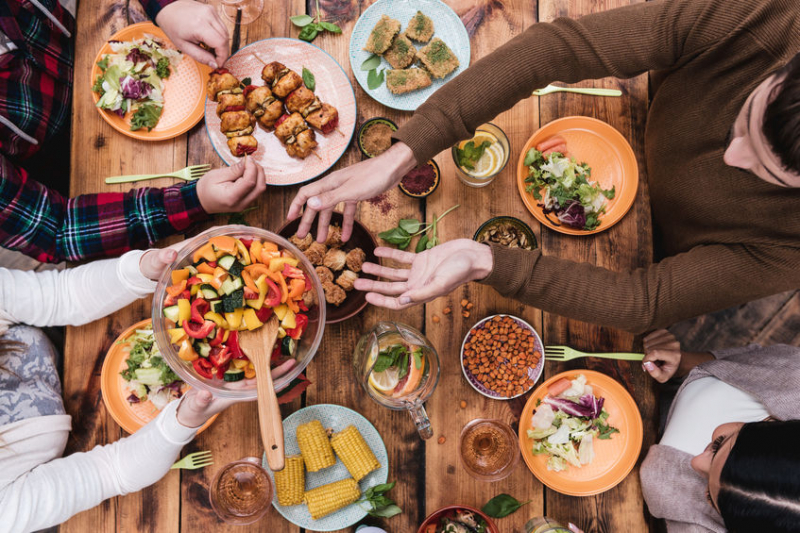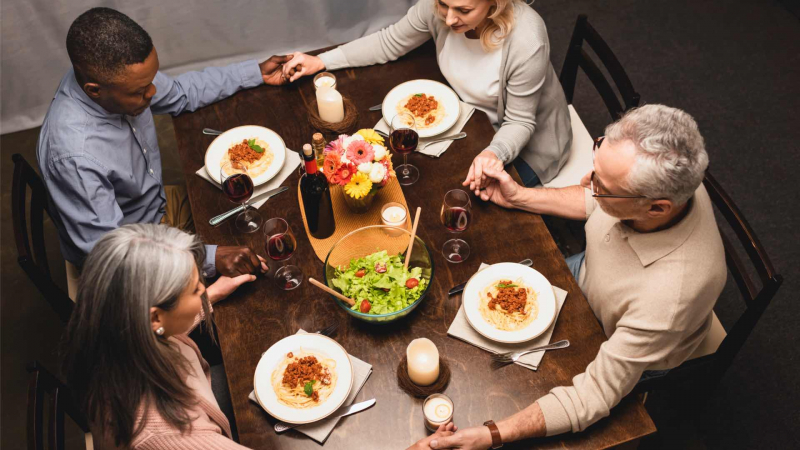Dining etiquette
Dining etiquette for getting started: Start eating only after the host says, "Buen provecho!" Knives and forks can be used in either the American or European styles (switching) (keeping the fork and knife in the same hands throughout the entire meal). When the meal is finished, the knife and fork are laid across the plate parallel to each other. If you leave both utensils on the plate for an extended period of time, it indicates to the waitstaff that you are finished, and your plate may be removed from you. Alternatively, if you place your cutlery on either side of the plate, it indicates that you haven't finished; but if you really are, the host might interpret this as a sign that you were not happy with the meal.
Dining etiquette for using your hands: When not holding utensils, your hands are expected to be visible above the table: this means you do not keep them in your lap. Rest your wrists on top of the table.
The most prestigious seat is at the head of the table, with the most important guest seated immediately to the host's right (women to the right of the host, and men to the right of the hostess). If a couple is hosting, one will be at each end of the table. Men and women are seated next to one another in the European tradition, and couples are frequently broken up and seated next to people they may not have previously known. This is done to encourage discussion. When women enter a room, men typically rise and continue to hold doors for them, allowing them to enter first. Keep reading to explore more about Dominica Culture, Customs and Etiquette.








